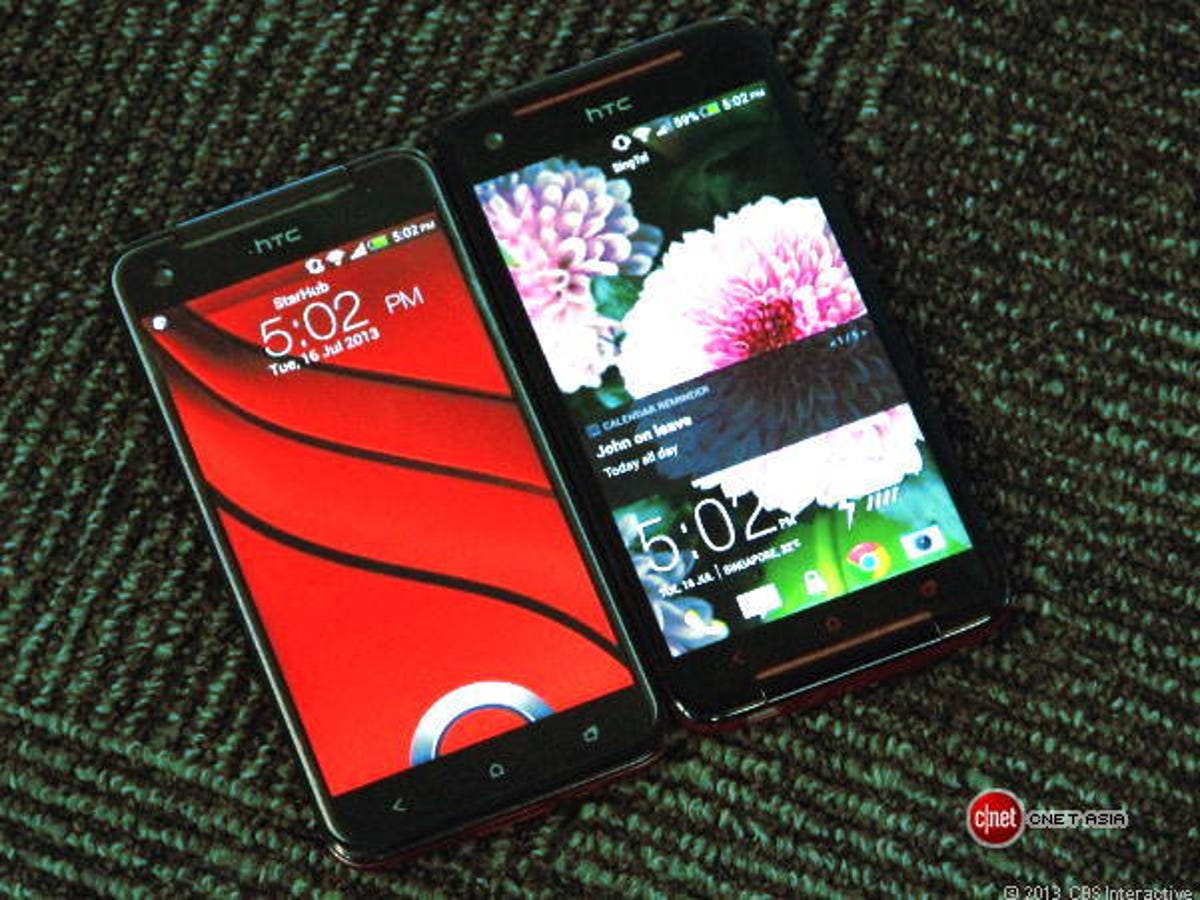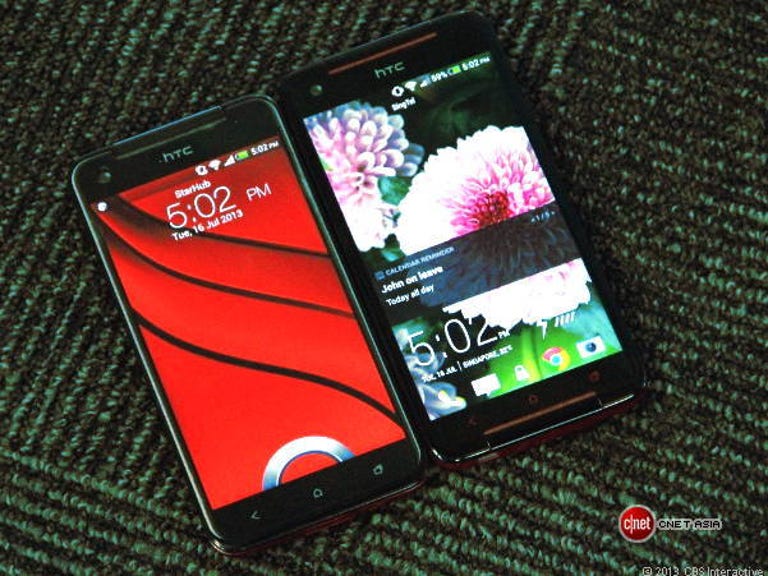 Why You Can Trust CNET
Why You Can Trust CNET HTC Butterfly S review: Swift processor, fat battery offset by cheap plastic
Meet the new HTC Butterfly S, which features a faster processor and higher-capacity battery than the company's flagship, the HTC One.
The HTC Butterfly S packs better specifications compared with the HTC One, but it doesn't have the great industrial build. If you're the type who prefers the fastest hardware, then the Butterfly S is the one for you. Otherwise, stick to the better-looking flagship One.
The Good
The Bad
The Bottom Line
Announced in Taipei and targeted at the Asian market, the updated 5-inch smartphone features a faster 1.9GHz quad-core processor, the Ultrapixel camera found on the HTC One, and a much larger 3,200mAh battery. While it looks somewhat similar to its predecessor, the original HTC Butterfly, HTC has breathed new life into this handset with front-facing speakers and a fresh helping of Android Jelly Bean and the Sense UI.
Design
The HTC Butterfly S doesn't deviate much from the original Butterfly handset. The design of the Butterfly S remains pretty much unchanged, except for the additional front-facing BoomSound speakers like on the HTC One. This is a good design effort by HTC, as it makes sense for the audio to be directed straight toward the user rather than from the rear or the sides where it can sound muffled.

If you like bigger screens, the HTC Butterfly S, like the Samsung Galaxy S4, sports a 5-inch full-HD panel. Like the original Butterfly, the screen delivers a good color reproduction as well as wide viewing angles.
Another thing I liked about the Butterfly S is that it comes with the standard three buttons. It did take me a while to get back to hitting the Home button located in the center (I was using the HTC One before this), but I feel that having three buttons is better than the HTC One's two, as it's less confusing to have a dedicated app switcher button.
The micro-SIM and microSD card slots are located at the top of the unit beneath a cover. I was originally worried that the microSD card would be hard to access, but the slot is spring-loaded, so there was no issue with removing the card. The power button is located next to the port, and like on the One, the button also doubles as an IR blaster to remotely control your TV.
The handset is curved gently to fit into your palms, but unlike the flagship One, the Butterfly S is made with glossy plastic. Not surprisingly, the handset feels oily with unsightly smudges after prolonged usage.
Features
The Butterfly S is the first HTC handset to launch with Android 4.2.2. Jelly Bean, though it still runs the new Sense 5 UI over it. There are some slight compromises that HTC has made to the operating system for its skin, including a limited customizable lock screen. Sense 5, by default, has a very featured range of lock screens to suit different user preferences, making the 4.2.2. lock screen features redundant.
You do get access to Quick Settings, Daydream, as well as the long-awaited battery percentage in the status bar. BlinkFeed has also been improved with the ability to pull feeds from WeChat and Instagram. WeChat feeds seem exclusive to the Butterfly S -- it's not available in the HTC One.
If you want to find out more about the HTC's Sense UI features, be sure to head over to our review of the HTC One for more detail.
The Butterfly S packs 16GB of onboard storage, which may not be enough if you have tons of multimedia files. Fortunately, it has a microSD card slot for added storage.
Connectivity-wise, the handset gets the full treatment in the form of Wi-Fi, Bluetooth, DLNA, HDMI, and LTE, as well as NFC (which the first Butterfly did not have). Sadly, the smartphone loses the water-resistant capabilities found on the original Butterfly, which is a pity, as we're seeing more water-resistant handsets coming out from manufacturers these days.
Camera
Instead of the 8-megapixel camera found on the Butterfly, the S gets the 4-megapixel Ultrapixel camera with a f2.0 aperture and BSI sensor. It's the same shooter that the One has, and you'll find that performance is similar. You'll get better low-light shots, but the aggressive noise compression algorithm tends to smear details. You'll also be losing out on details that you can get on images taken with a higher-megapixel sensor in bright conditions.
Performance
Packing a quad-core 1.9GHz Qualcomm Snapdragon 600 processor, the Butterfly S is slightly faster compared with the HTC One, which uses the same chip, but clocked at 1.7GHz. The 3DMark benchmark tests showed that the Butterfly S is slightly faster than the Samsung Galaxy S4, which uses the same 1.9GHz Snapdragon 600.
The Butterfly S' 3,200mAh battery chugged along for about a day and half of moderate use. The smartphone was tested with our normal test settings of having two e-mail accounts, Facebook, and Twitter set to push notifications.
Voice quality was great, and if you like using the speakerphone feature, you'll appreciate the BoomSound front-facing speakers.
Conclusion
There's no doubt that the HTC Butterfly S is a great phone. While the design isn't new or interesting, it does sport better hardware specs compared with the flagship HTC One, though at a slightly higher price.
However, I still feel that the design needs to play an important part in smartphones -- with pretty much the same UI, these handsets need to distinguish themselves with the use of premium materials such as aluminum and glass.
While the Butterfly S does come in three striking colors, I'm of the opinion that with smartphones becoming lifestyle products, its design needs to stand out more. That's why despite the great hardware and features, I won't be awarding the Butterfly S with our Editors' Choice Award.
That said, if you're keen on picking one up, be sure to check with your local retailers for country-specific pricing and availability.


